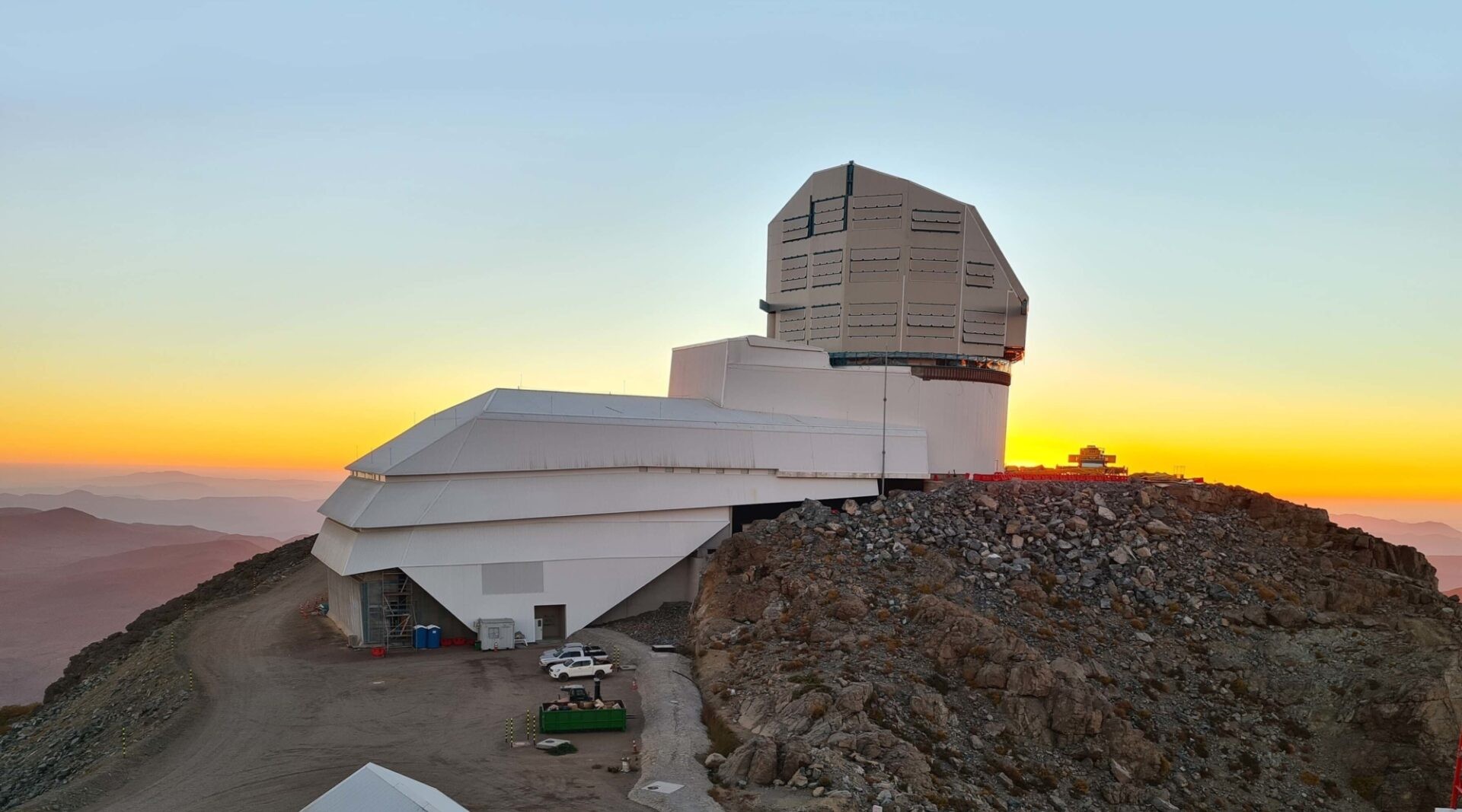Observatory Facility
Highlights
- The equipment that generates the most heat is located as far as possible from the telescope, because if warm air mixes with the cool air in the dome, it can affect the sharpness of the telescope images.
- The building has an 80-ton capacity elevator for moving equipment only; people are never allowed to ride in it. This is how we get the mirrors or the camera from the maintenance area to the telescope floor, which is four levels higher!
- We'll never have to take the mirrors or camera down the mountain for repairs or maintenance, because we have all the right equipment and the space to do that work right in the observatory.

You might have noticed that the Rubin Observatory looks different from other astronomical observatories, and there’s a good reason for it. The design of the building, its specific location on Cerro Pachón in Chile, and its orientation all contribute to making sure Rubin Observatory produces the most accurate data possible.
One prominent feature that makes the Rubin Observatory facility unique is the long, low building attached to the enclosure that supports the rotating dome. This 27,000 sq ft (2500 sq m) building houses all kinds of complex support systems (e.g., electric, heating and cooling) that are necessary for the operation and maintenance of the telescope and camera. There is also a dedicated service floor, where specialty equipment is stored and routine maintenance tasks can be performed.
One particularly large piece of support equipment housed in the building is the mirror coating chamber. The chamber was used to coat the telescope mirrors with a thin layer of reflective material before they were installed, and we will periodically re-coat them during the ten-year survey to keep them performing at their best. Having the coating chamber on the summit of the mountain means we don’t have to pack the mirrors in transport crates, drive them down the mountain to be coated and then bring them back—that would take weeks from start to finish! We also don't want to move our irreplaceable mirrors around more than we need to. Instead, the mirrors can be cleaned at a dedicated washing station (also on the service floor) and coated in the coating chamber—all without ever leaving the building. The more maintenance we can do on the mountain, the less time the telescope is out of service and not producing data.
The service building also has a dedicated clean room for any work related to the camera, because many of the camera components are so sensitive that they have to be protected from even the finest dust particles in the air. When mounted to the telescope the camera's delicate components stay safe inside a vacuum-sealed cryostat, but if any parts are removed for maintenance or repairs they must be in a highly protected space. The camera clean room provides a dust-free environment, and only essential, trained staff can go inside.
The placement of Rubin Observatory's facility takes advantage of the topography of the El Peñón summit on Cerro Pachón. The domed telescope enclosure sits on the highest and largest peak, and the service building rests on a slightly lower area farther to the east. Scientists did extensive testing on the site as the building was being designed, and they found that this spot had the best astronomical "seeing" in the area, which means that there is less air disturbance above this site than other places nearby. You might also notice the unique shape and design of the white service building—the tiered layers are specially designed to catch wind and direct it around the building, helping to reduce the air turbulence inside the dome itself. The observatory site is also a geologically stable spot compared to others on the mountain—an important consideration since Chile has a lot of earthquakes. The high level of seismic activity in this region also contributed to some other design details. For example, the dome is separated slightly from the service building instead of being attached, so that each part of the facility can move independently in an earthquake and—hopefully—sustain less damage. Also, the dome enclosure is anchored into the mountain with LOTS of concrete so that it will stay in place if the ground moves!


